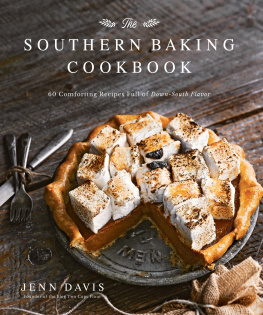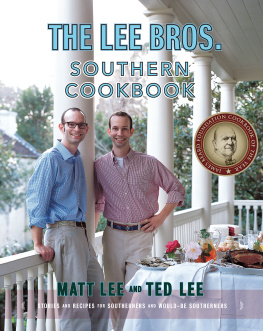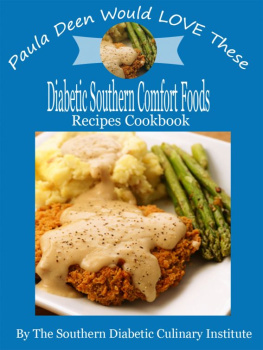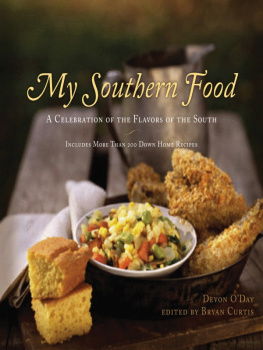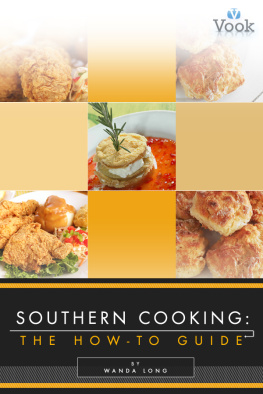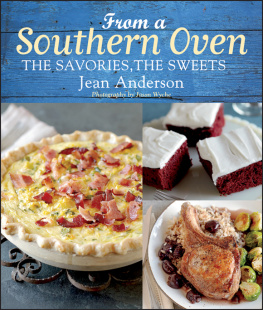For information about permission to reproduce selections from this book, write to Permissions, The Countryman Press, 500 Fifth Avenue, New York, NY 10110
For information about special discounts for bulk purchases, please contact W. W. Norton Special Sales at specialsales@wwnorton.com or 800-233-4830
A division of W. W. Norton & Company
500 Fifth Avenue, New York, NY 10110
www.wwnorton.com
CONTENTS



Nothing motivates one to get in the kitchen more than a funeral. We all seem to harbor that primordial need to comfort with food.
Funerals in the South are synonymous with food. Even if its a hastily thrown together deli tray, a jar of homemade dressing and a bag of salad greens, or a pound cake from the freezer, the first thought is How can I feed them? Small town communities, urban social circles and religious congregations can pull together a plan with a rapidity and precision world military leaders can envy. Phone trees, sign-up sheets, and now email blasts and text chains organize everything a grieving family could need. The table at any visitation, celebration of life, or home-going is like an encyclopedia of local foodways, or a precise study in the cultural anthropology of a society. We often express our emotions and process our grief through the act of nourishing our neighbors. Southern author and humorist Julia Reed perhaps puts it most succinctly. She tells the story of her grandparents, unexpected death in an accident. The dreaded call came and her mother leapt into action to make all the necessary arrangements. Knowing what was to come, as she rushed out of the house, she gave Julia one instruction: Go clean out the refrigerator.
There are times when your instinct, your hearts reaction, is to prepare food. Comforting, sustaining, and, well, practical food. To comfort a grieving family and remove at least one mundane worry. To help out a friend in need who would do, or has done, the same for you. To feel useful in a fearful time. The problem is, what exactly to make. Too often we, and everyone around us, turn to standardsrecipes we see as foolproof, know how to make on short notice, know they reheat and keep well. Recipes that we keep in mind, or maybe on a card at the front of the recipe box for easy access. A hearty, comforting dish that we know how to make and how to make well, that we can whip up the instant the call comes. What we really want to do, intend to do, is to deliver a dish that is wholesome, satisfying and, most of all, enjoyable. Something that will be truly appreciated and do what we mean it toprovide comfort, show kindness and hopefully bring some joy.

Neighbors bring food with death and flowers with sickness and little things in between.
Harper Lee, To Kill a Mockingbird

The recipes in this book are meant to do just thatdishes perfect for the funeral gathering, or for a bereaved family at home. Whether its a full-on casserole, a traditional molded salad, or a simple breakfast or snack, Ive included recipes that cover all the bases. But of course, you dont have to wait for a funeral to try any of them out.


Sweet Tea is so ubiquitous and all encompassing in the South, we use it in just about any way we can. This light, delicately flavored quick bread is perfect for breakfast or an afternoon gathering, packaged up nicely with a ribbon or sliced on a silver platter.
:: MAKES 1 LOAF
Put the tea bag and 2 sprigs of mint in a measuring cup. Add 1 cup boiling water. Steep for 30 minutes, then remove the tea bag and mint. Cool to room temperature.
Preheat the oven to 350F. Spray a 9-by-5-inch loaf pan with baking spray.
Beat the butter and sugar together in the bowl of a stand mixer fitted with the paddle attachment until light and fluffy. Beat in the lemon zest and 1 tablespoon of finely chopped fresh mint. Add the eggs, one at a time, beating well after each addition and scraping down the sides of the bowl.
Measure out cup of the tea, reserving the rest for the glaze. Add the flour, baking powder and salt to the butter in the bowl in three additions, alternating with the tea and scraping down the sides of the bowl. When everything is well combined, beat on high for 5 seconds, then scrape the batter into the prepared pan and smooth into an even layer.
Bake for 45 to 50 minutes until a tester inserted in the center comes out clean. Cool in the pan for 10 minutes, then remove to a wire rack to cool completely. Meanwhile, prepare the glaze.
Sift the confectioners sugar into a small bowl. Whisk in the remaining tea slowly, until you have a pourable glaze about the consistency of heavy cream. Drizzle the glaze over the cake with a spoon, spreading to cover the top with a few attractive drips down the sides. Let the glaze set for about an hour.
The loaf will keep in an airtight container for a day.
1 family-sized tea bag
2 sprigs mint, plus 1 tablespoon finely chopped mint
8 tablespoons (1 stick) unsalted butter, at room temperature
cup granulated sugar
Zest of one medium lemon
2 large eggs
1 cups all-purpose flour
teaspoon baking powder
teaspoon salt
cup confectioners sugar

The Visitation
Many Southern funerals include the visitation. That may sound like the spectral appearance of our departed loved one, but no. The visitation is the reception, frequently the day before or immediately after the funeral. Its a chance for everyone to talk to the bereaved, share memories of the deceased, and really get their feed on. And, equally important, for the ladies in the equation to show off their skills in the kitchen. Friends and family of the recently departed are in the kitchen, bustling around in their funeral best, maybe with an apron thrown on top, looking for serving pieces and Saran Wrap, deciding what goes on the table and what goes in the fridge for later. In many small towns, the visitation is held in a church hall, with the ladies of the church supplying much of the food. In other places, the visitation takes place at the funeral home or the home of the deceased, with friends supplying the buffet.





